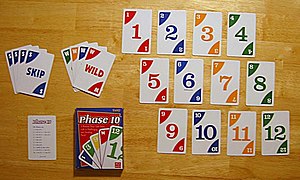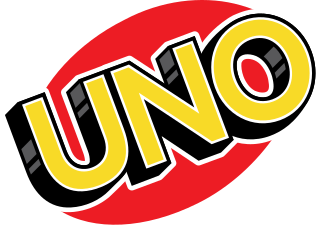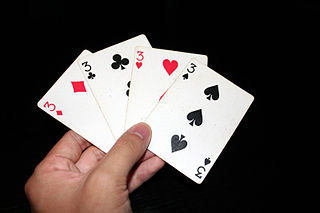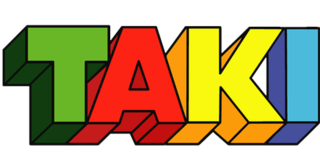This article has multiple issues. Please help improve it or discuss these issues on the talk page . (Learn how and when to remove these template messages)
|
 Cards used in Phase 10 (original version with colored Wild and Skip cards) | |
| Designers | Kenneth Johnson |
|---|---|
| Publishers | Mattel |
| Players | Two to six |
| Setup time | < 1 min |
| Playing time | > 3 min per hand (45-90 mins, 6 players ) |
| Chance | High |
| Skills | Saving important cards; knowing when to put down those cards; matching, ordering |
Phase 10 is a card game created in 1982 by Kenneth Johnson and sold by Mattel, which purchased the rights from Fundex Games in 2010. [1] Phase 10 is based on a variant of rummy known as contract rummy. It consists of a special deck equivalent to two regular decks of cards, and can be played by two to six people. The game is named after the ten phases (or melds) that a player must advance through in order to win. Many people shorten the game by aligning it to baseball rules and consider 5.5 phases to be a complete game when running out of time to complete the full ten phases. Whoever is in the lead when play stops if someone has completed 5.5 phases or more is the winner.
Contents
- Objective
- Phases
- Definitions
- How to play
- Completing phases
- Hitting
- Special cards
- Going out / finishing a hand
- Winning
- Variations
- Official Variation Phase Sets
- Floating Variation
- Alternate Wild Card Deal Up Method
- Alternate Wild Card Rule
- Masters Edition
- Masters Edition Variant #1
- Masters Edition Variant #2
- Anti-phase
- Anti-phase for others
- Phase 10 Dice
- Phase 10 Twist
- Postal Rules
- Mobile
- Tough Luck
- Reviews
- Notes
- References
- External links
Phase 10 was Fundex's best selling product, selling over 62,600,000 units as of 2016, making it the 2nd best-selling commercial card game behind Mattel's Uno. [2] In December 2010, Fundex sold its license rights to Phase 10 to Mattel.










